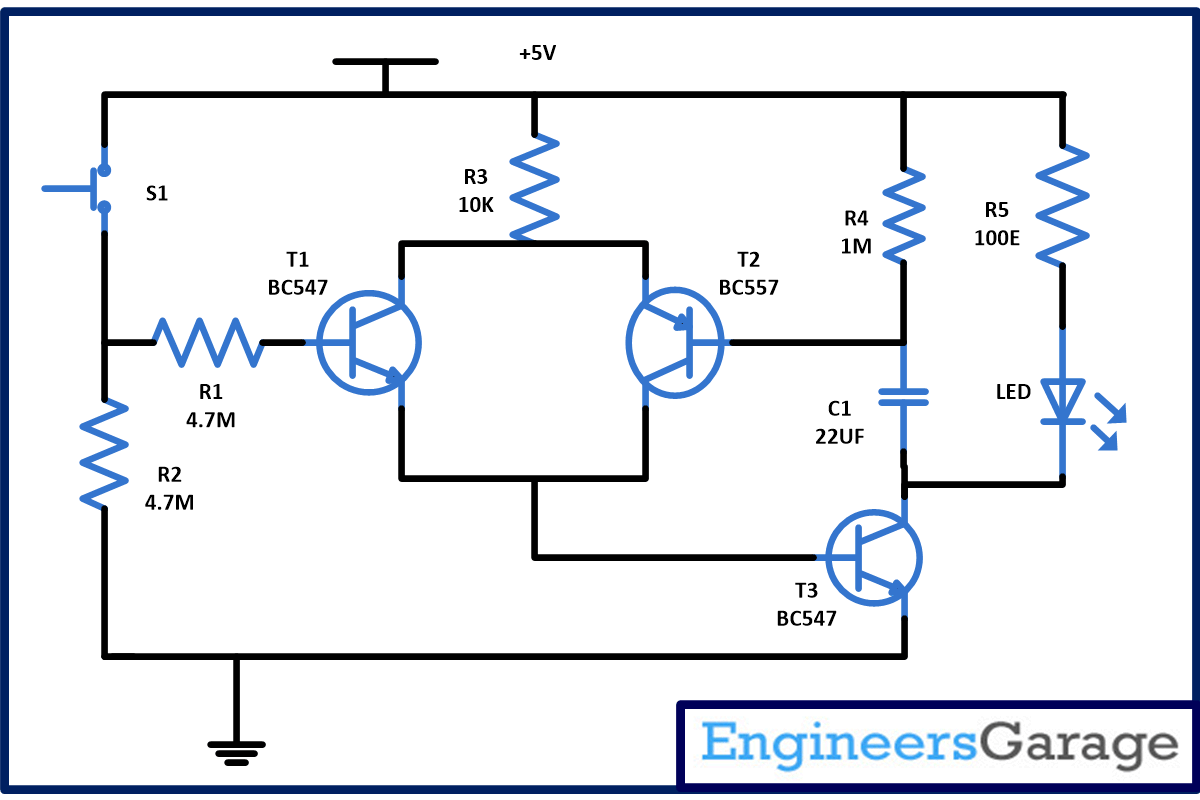The white LED notepad lamp will help you to note down the message, telephone number or address in darkness. You can keep it near your telephone so that in night you can easily right the message. To switch on the light just press the switch S1 and it will on the light for specific interval of time and light will switch off again automatically. This small led notepad lamp circuit is potable; because of its small size you can easily put this in your pocket or purse and can be used in emergency like in power failure.
[[wysiwyg_imageupload:10525:]]
Fig. 1: Prototype of Notepad Lamp Circuit on Breadboard
This simple circuit is based on three transistors with few more components. Important feature of this circuit is in standby mode no transistor will conduct hence longer battery life. When you push the switch S1 to on the lamp transistor T1 conducts and its emitter is connected to base of transistor T3 therefore emitter current provides a positive bias at base of transistor T3. We have used R1 to protect the transistor T1 from excessive or random current and R2 is used to reduce the sensitivity of transistor T1.
Now transistor T3 starts conducting and white LED connected to its collector start glowing. When transistor T3 start conducting, capacitor C1 starts discharging through it and sends negative pulse to transistor T2 and transistor T2 start conducting. This will built a voltage across the base of transistor T3 even high because of this when we release the switch than also LED glows. After some time capacitor C1 start charging through resistor R4. And when voltage across capacitor C1 becomes equal to supply voltage, it will provide a positive pulse to transistor T2 and it stops conducting. Because of that T3 also stop conducting and LED become off.
If you want to increase or decrease the time period for which LED remain on just change the value of resistor R4 and capacitor C1.
Circuit Diagrams
Project Components
Project Video
Filed Under: Electronic Projects
Filed Under: Electronic Projects



Questions related to this article?
👉Ask and discuss on Electro-Tech-Online.com and EDAboard.com forums.
Tell Us What You Think!!
You must be logged in to post a comment.